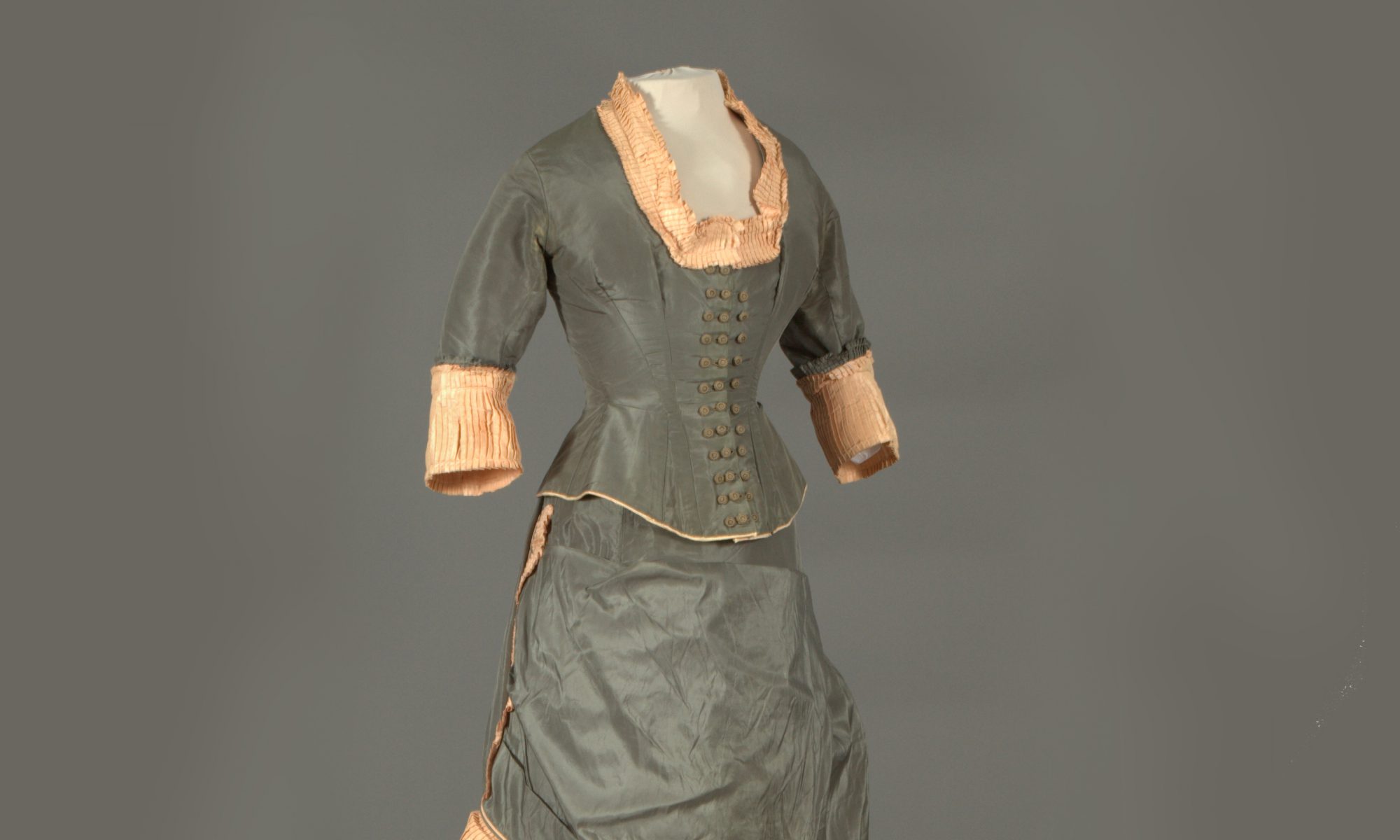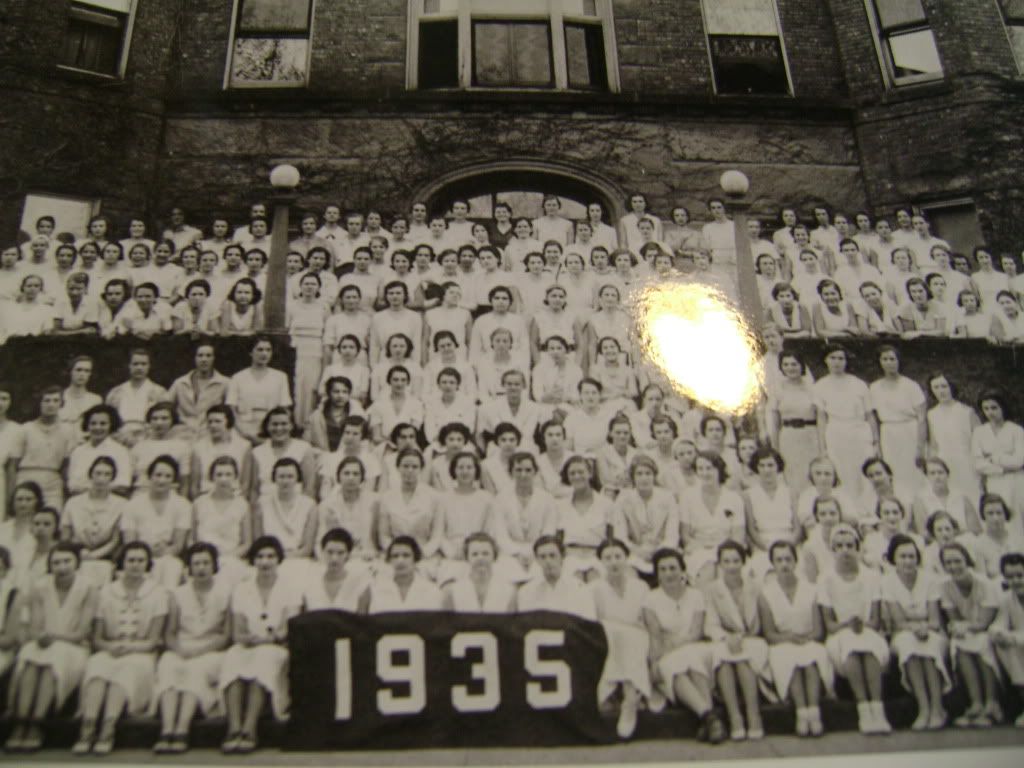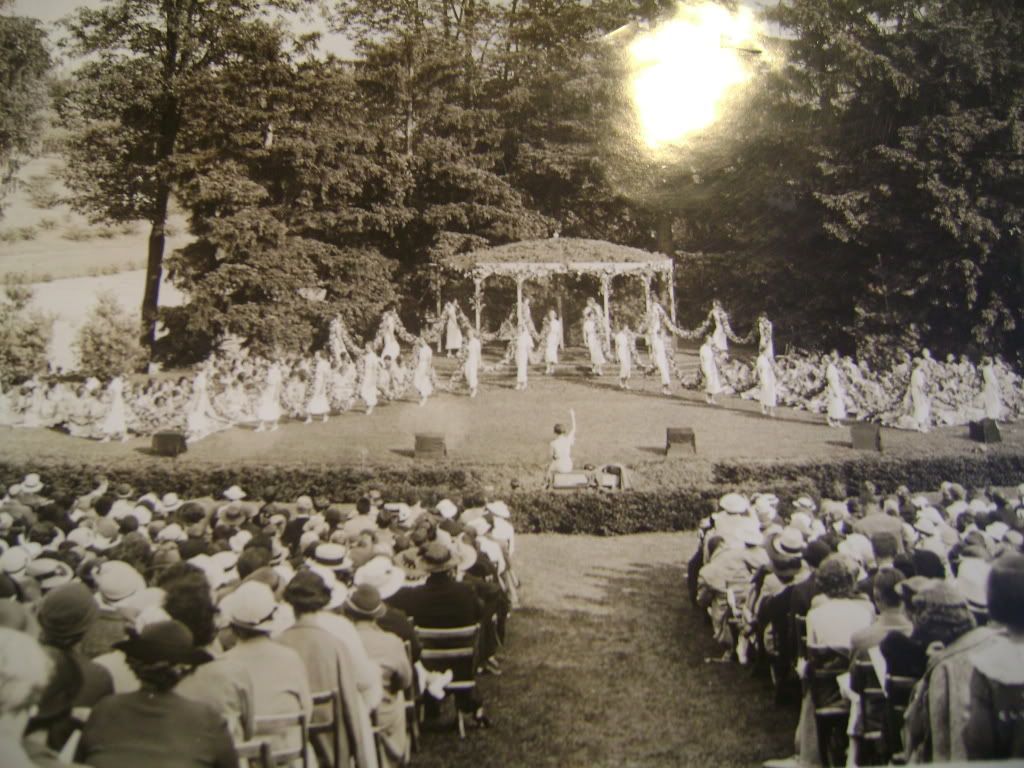In our discussions of the potential focus of the VCCC’s upcoming exhibition, we began to talk a little about dressing academically. Our broad focus for the exhibition, at least for now, is to explore the ways in which education influences dress (does it? in what way?). It is of particular interest to me how an academic environment (and not merely the knowledge gained from an education, which is how I’ve been interpreting the word education in our broad focus) influences dress, especially for women. Did (and do) women feel compelled to adopt menswear detailing in order to align themselves with an institution (that of academia) that has been historically and traditionally so dominated by men? Do uniforms of academia such as graduation gowns and robes help to portray a person as being more closely aligned with their academic institution (and thus of greater seriousness or intellect)? This is the general thread that I am following in exploring a couple daisy chain dresses that we have in our collection.
My thoughts on the daisy chain dresses are still in their early formations, but I’ve begun to think about this issue as it applies to contemporary dress. This issue is still an incredibly relevant one – we have a long way to go before a professor in a pink dress will be perceived as an intellectual equal to her tweed jacket-wearing colleague. I have a lot of questions (and I’d love it if you’d help me explore them in the comments section): should a person seek to represent himself in a more traditionally academic way in order to help himself? Is it, then, necessary to dress in an academically “appropriate” (feel free to interpret this word in whatever way you choose) manner when going to class – as a student or as a professor? What about dressing intellectually, i.e. creating an outfit based on aesthetic principals or conceptual guidelines? Is an intellectual outfit less acceptable than an academic outfit within academia, and should this be the case?
I was browsing around the internet and encountered a string of fashion and/or style blogs written by academics that partially addressed the issues I’ve brought up in the above paragraph. http://fashionableacademics.blogspot.com/ is a blog written by a group of professors and grad students and is one of the more informative and provocative blogs I came across. They have a category of posts that they label with the tag “professartorial” where they post their outfits and discuss, to a certain extent, the thought process behind creating the outfit. It is refreshing for me to read the blog because it is unusual for either fashion or style to be acknowledged as interesting in any capacity by the academic community.
Now, this is just a blog written by a couple of friends about how they dress, and I acknowledge that, but by aligning their blog with academia in general I feel they’ve opened themselves up to the possibility of a little ideological criticism. When crafting their outfits, the most prominent guiding factor seems to be: is this appropriate for teaching in a classroom? The more serious the event (class lecture, department meeting) the more traditionally academic their outfits appear to become. I appreciate the amount of thought that they put into the appropriateness of their outfits, but I can’t help feeling unsatisfied. I know that not everyone feels compelled to intellectualize clothing, nor should they, but as academics and as self-proclaimed feminists I find their apparent lack of questioning to be a little troubling. They aim for appropriateness when it is called for, but do not question that nature of the appropriateness that they’re striving for. Yes, one wants to dress professionally in the workplace, but the standard of the professional appropriateness (especially in academia and corporations) is masculinized and traditionalized. Tweed and corduroy blazers are the epitome of academic appropriateness because they borrow from both traditionally masculine (blazer) and traditionally academic (tweed and corduroy) aesthetics.
This is not meant to be a critique of the way that these women and men dress, but rather a lens through which to view these issues. Why should a traditionally academic outfit command more academic respect than an outfit constructed to some conceptual end?
I’m hoping that these questions will help guide me through my research of the Daisy Chain dresses and other academic garments in our collection. At what times did Vassar require a Daisy Chain uniform, and when did it allow students to express their personal taste more freely? At what point did Vassar switch from formal attire for graduation to the classic academic graduation gowns? What was going on in the college and in the world at these times that might have prompted the shift? There’s a lot to think about, and I hope to answer some of my own questions above in a part II to this post at the end of the semester.
P.S. Some other academic (or otherwise) style blogs that are relevant to this post: http://www.academichic.com, http://www.scholarstyleguide.com/, http://www.alreadypretty.com/2010/09/how-can-we-reclaim-traditionally.html, http://whatwouldanerdwear.blogspot.com/ and this post in particular http://whatwouldanerdwear.blogspot.com/2009/12/what-would-fashionable-academic-wear-to.html




